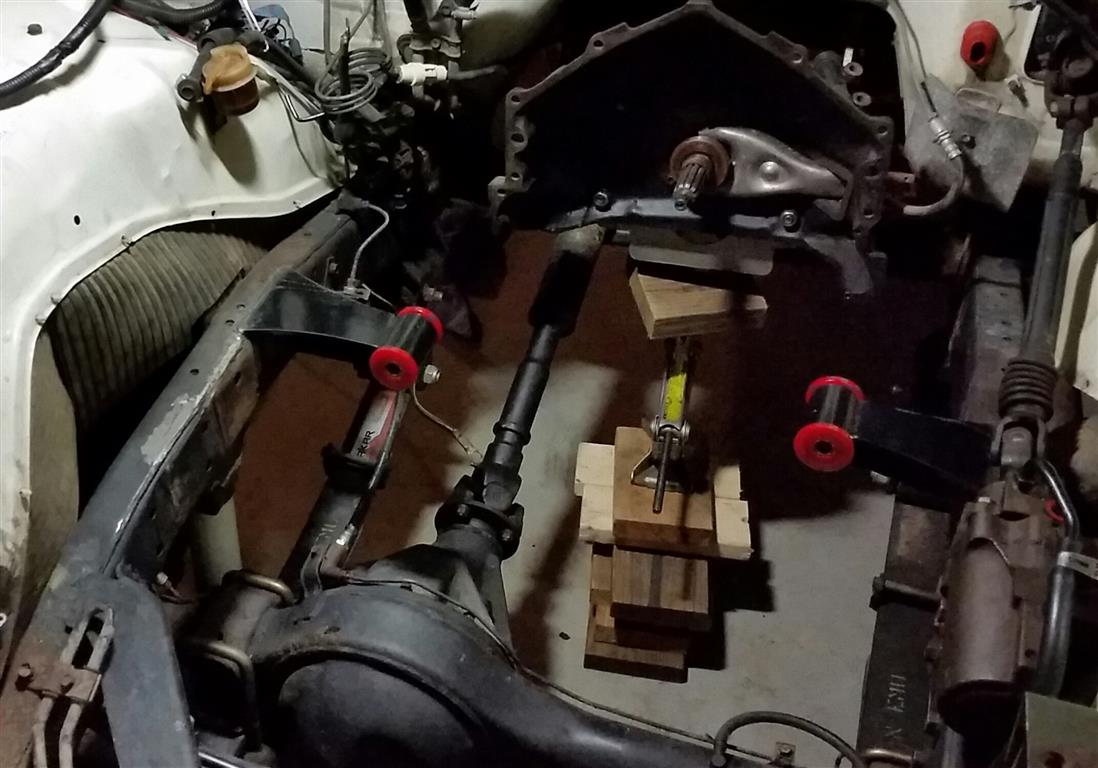- Thread starter
- #21
Nah, probably not. But, I'm not sure I've seen you use the angry foot before though...maybe the mildly annoyed foot, or the the slightly perturbed foot....but never the angry foot. Thought I might see it when your carb was giving you grief, but you kept your cool (mostly )...
Haha...you're right...and once this engine is in, hopefully this rig will never get my blood boiling like before!
...
Update time: Progress has been made...

Parts showed up...fancy stainless steel manifolds, and "universal" LS swap engine mounts.
Got the wire harness "done", for now:

The PCM will be located on the drivers side fender, and you can see all of the labeled connections there (fuel pump output, tach output, MIL lamp, OBD-2 plug output, e-fan output, etc...).
The lower left of the pic is the rear O2 sensors and VSS plug. Using a Dakota Digital adapter to provide the PCM will speed input - Hopefully it fits on the splitcase (goes onto the OEM speedo cable).
Top center of the pic is where it bolts to the intake manifold and splits off in the proper direction, to go to each sensor and plug. If you look carefully, there is a bundle of pink wires...those all need to go to the fusebox for +12v input. That work will come once the engine is set permanently in place.
Speaking of which...
Yesterday, I got out of work early and got the engine off the pallet it was shipped on, and set between the frame rails!

Here's a shot from the front, as I was checking hood clearance.
Looks like I have about an inch to work with, above the motor:

Also checked the fit of the transmission input shaft to the pilot bearing...all looks good there:

...
So it will sit here a while I work on the motor mounts...then I'll pull it back out, clean the motor up a little, install the clutch and flywheel, and stab it back in for good.
Then it's custom exhaust (the manifolds fit great in my particular application), fuel system, intake piping, finish the wiring, etc, etc...
But I'm just over 2 weeks in at this point...making most of my progress each evening, 30-45 minutes at a time. Plus a 1-2hr block here and there on the weekends. I'd guess I have 12-13hrs total into it at this point.
Anyway, I'll post more as there is more to post!
- Brian


























